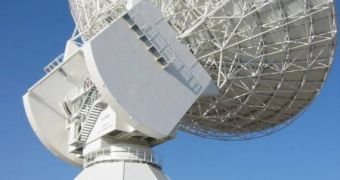The European Space Agency (ESA) announced on June 22nd plans to expand its network of deep-space surveillance stations, when it informed the Argentinian government that it had selected a 30-square-kilometer area, on which it would build a new, giant, 35-meter radio antenna. Once completed, the plant will be the agency's third station featuring such a large antenna, and officials hope that the structure will allow ESA experts and astronaut teams around the world access to very distant objects.
The area that the agency showed interest in is located south of the town of Malargue, in the Mendoza province, some 1,000 kilometers West of Buenos Aires. “The site offers all the features that are required for a long-term ground segment investment. We are very pleased that we could pave the way for promising space missions with the support of the Argentinean authorities,” the ESA Director of Operations and Infrastructure, Gaele Winters, said.
The location was selected from 35 others, spread out across Chile and Argentina, and it made the number-one spot because it fulfilled all the requirements that the Europeans had. The site is a desert, which means that interference from humans will be limited, and the station will be left alone to do its job. The National Communications Commission of Argentina assured ESA that it would keep radio interference away from the site, and also that the use of the frequency the antenna needed would be guaranteed for many years to come.
The core of the ESA Tracking (ESTRACK) network is made up of two 35-meter antennas, one in Cebreros, Spain, and the other one in New Norcia, Australia, as well as by seven 15-meter stations spread out around the globe. The Malargue station will constitute a welcomed addition to this group, ESA believes, and it will further boost the agency's credibility as a major player in the space industry. By the end of this August, all legal details with the Argentinian government will be completed, and the ESA Council will most likely approve the project come October. Work on the site is scheduled to end in mid-2012.

 14 DAY TRIAL //
14 DAY TRIAL //